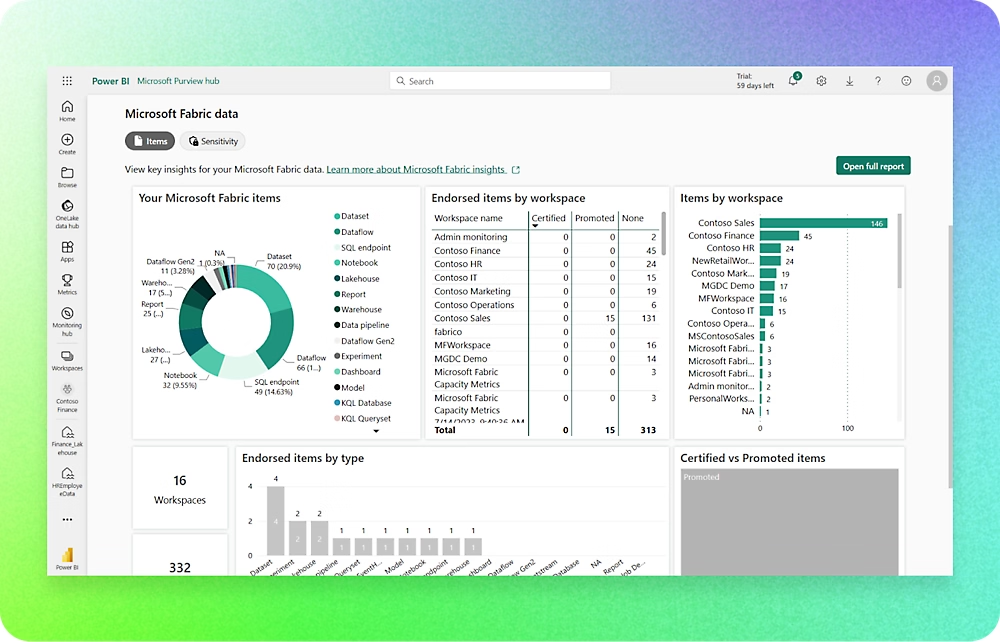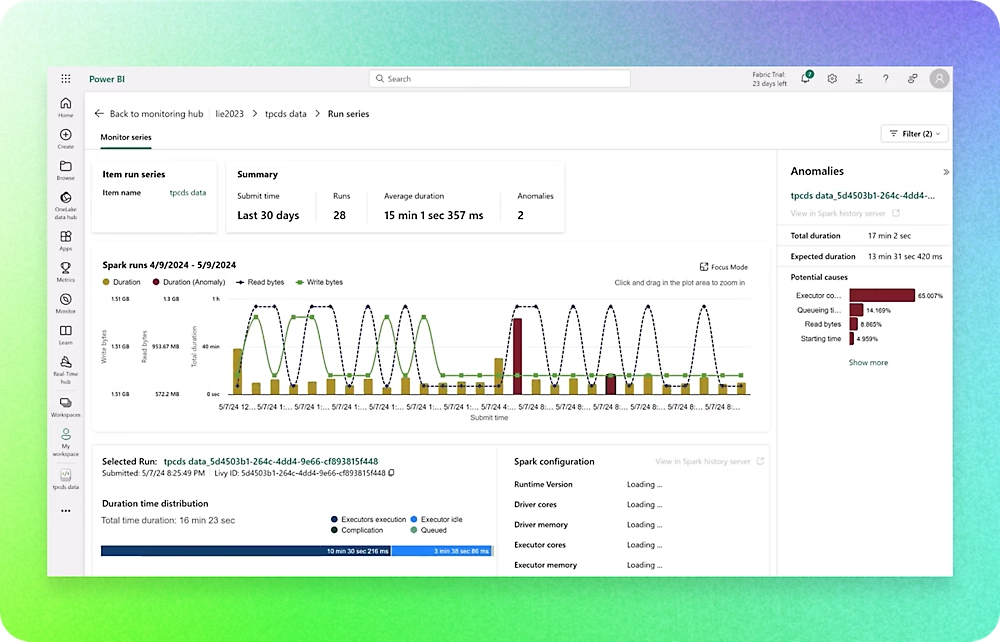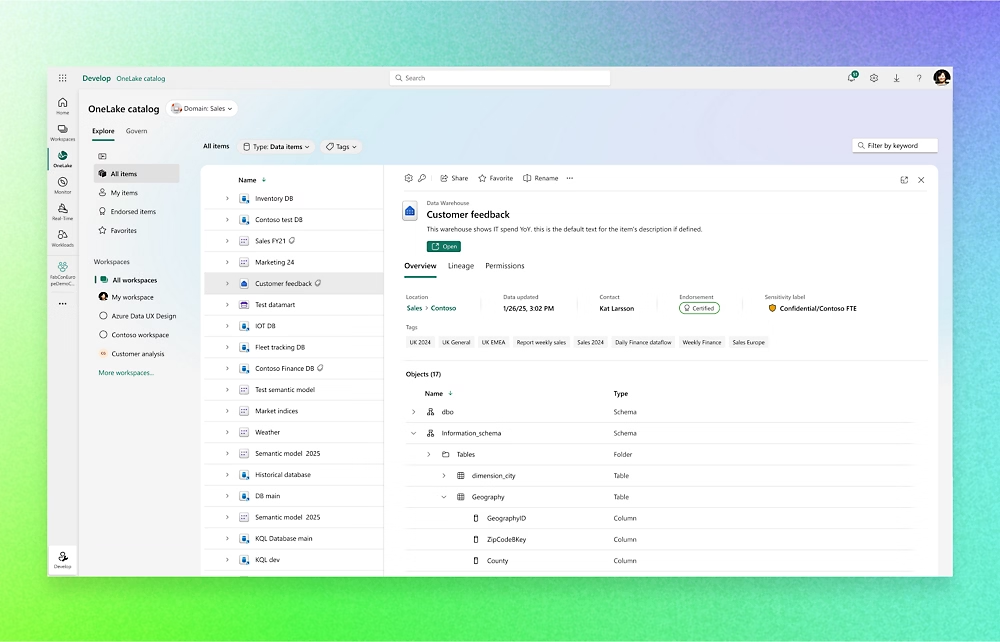Microsoft Fabric – a unified foundation for your data
In a time when data has become one of a company’s most important assets, it is crucial to manage collection, structuring, and analysis effectively. Microsoft Fabric is Microsoft’s unified data platform that connects all of a company’s data needs – across systems, sources, and roles.
While Business Central delivers the operational data about finance, production, projects, and sales, Fabric enables you to combine this data with information from other systems (CRM, production equipment, e-commerce, Excel files, and more) in one flexible and secure platform.
Fabric is therefore not just an analytics tool but a shared foundation where all your data can be stored, modeled, and analyzed – both for daily reporting and for more advanced BI and AI scenarios.
What is Microsoft Fabric?
Fabric can best be described as an “all-in-one data platform.” It combines previous Microsoft products like Azure, Data Factory, and Power BI into one unified ecosystem.
With Fabric, you get:
A unified data platform: All the company’s data is gathered in one place, called “OneLake.”
Flexibility: Whether your data is in Business Central, Excel, SQL databases, or third-party systems, Fabric can pull it all together.
Scalability: The platform grows with your needs – from simple reporting to advanced data analysis and AI.
Integration with Microsoft 365: Data can be used directly in familiar tools like Power BI, Excel, and Teams.
In short: Fabric is the long-term solution if you want a future-proof data platform that goes beyond Business Central alone.
When do you use Fabric?
Fabric is typically relevant if you:
- Have high data complexity or large volumes of data in Business Central.
- Have many different data sources that need to be consolidated.
- Need historical analysis across multiple years and systems.
- Want to leverage AI and machine learning to predict trends or optimize processes.
- Need to make data easily accessible across the organization – not just in the finance department.
If Business Central is the engine of your ERP solution, Fabric is the “data highway” where both Business Central and other systems can be connected.
Fabric future-proofs your solution, allowing you to start with data from Business Central and, as needs arise, integrate additional data sources.
The benefits of Fabric for Business Central users
- Brings the entire company together: Production, projects, finance, and sales can be analyzed alongside data from CRM, inventory, webshop, and more.
- Future-proof: Built on Microsoft’s latest technology – fully integrated with Copilot and AI services.
- Security and compliance: Fabric runs in Microsoft Cloud with high data security and EU compliance.
- Freedom to scale: From simple reports to complex data science projects.
How does Fabric fit together with Jet Reports, Jet Analytics, Power BI, and others?
Business Central provides a range of reporting options right from the start. Jet Reports and Jet Analytics build on these, especially focusing on the finance department, while Power BI makes data visual, interactive, and accessible across the entire organization.
Consider BI as part of your solution – whether you’re implementing Business Central or already have it.
A BI project can greatly benefit from being integrated as a natural part of a Business Central Cloud upgrade. By considering Business Intelligence from the start, you avoid later adjustments, corrections, and duplicated work – making the project easier, faster, and more cost-effective.
But if you already have a Business Central solution, there’s nothing stopping you from implementing a Business Intelligence solution. On the contrary, it can be a natural next step to get more value from the data you’re already working with today.
Every BI project begins with a workshop where we jointly map out your current and future reporting and analysis needs. Does the finance department need quick insights directly in Business Central? Does management require more advanced data modeling? Or do you need a unified data platform that can grow with the company?
BI is not an “either-or.” It can very well be a “both-and” – a solution that’s integrated into your ERP universe but doesn’t become a burden. It can start small and simple – yet be ready to grow when you are.
How to get started with Business Intelligence
Ready to get started with Business Intelligence? Ask our experts.
They know how to help you get started and what to consider along the way.
Why Vektus?
This is how we work
We work to ensure that your investment in Business Central is a success both now and in the long term.








